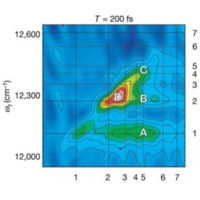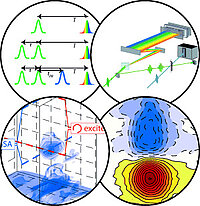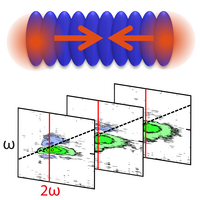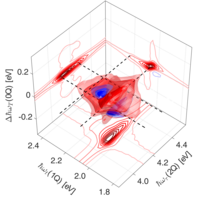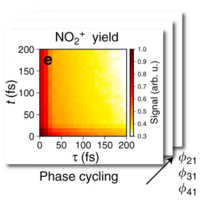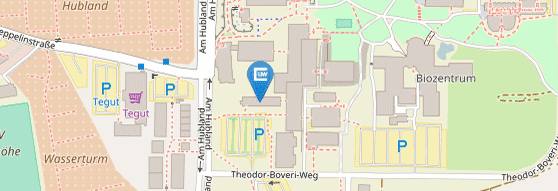2D spectroscopy
Optical spectroscopy in general allows insight into the structure of matter at the atomic level. However, while linear spectroscopy is used to observe predominantly static states, non-linear, time-resolved methods are suitable for investigating dynamic processes. Nevertheless, classical, established techniques such as transient absorption spectroscopy are limited to measuring quantum mechanical populations, and the actual cause of any temporal changes - namely the couplings between quantum mechanical states - are not directly accessible. This deficit is remedied by so-called coherent two-dimensional (2D) spectroscopy. By systematically varying the time delays between three exciting laser pulses and completely measuring the non-linear optical response, one also obtains the aforementioned couplings and can thus determine, for example, energy transfer processes in complex systems with nanometer spatial and femtosecond temporal resolution.
The results of such a measurement are processed into intuitively understandable 2D spectra. In this representation, the emission frequency of the system is plotted against the original excitation frequency, so that couplings and transfers between individual energy levels appear immediately as crosspeaks, i.e., intensities next to the diagonal axis of the spectrum (see schematic figure on the right). For example, the energy transfer in the light-gathering complex FMO after absorption of a photon could be elucidated with a spatiotemporal resolution of nanometers and femtoseconds (see figure). Here, the energy ladder of excitonic states is not traversed sequentially, but the transfer follows the best quantum mechanical overlap of the states [1]. With 2D spectroscopy, one obtains the complete spectroscopic information up to the third order; all conventional spectroscopy techniques (transient absorption, etc.) are automatically included. The visible spectral range (500 nm - 750 nm) is of particular interest because the absorption of biological systems, organic solar cells, natural and artificial photosynthetic complexes, quantum-dot systems, dye complexes, aggregated π-complexes, etc. are in this spectral range.
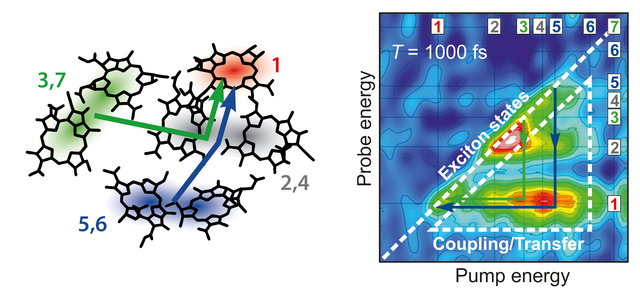
In our research group, a number of novel variants of 2D spectroscopy in the visible spectral range have been implemented, which can be used to study special dynamic processes such as photochemical reactions [2]. By adding further excitation pulses, three-dimensional spectra can also be generated, which can capture further details due to their higher spectral resolution.
We have also developed a special method to directly follow the annihilation of two electronic excitations in molecular systems. The character of energy transport can likewise be deduced from the data obtained from this method [3]. Furthermore, we have implemented multidimensional spectroscopy methods with shot-to-shot detection of fluorescence in the liquid phase [4], photoelectrons from solid-phase surfaces, and ions in the gas phase [5]. With all these tools, we are pursuing questions whose answers are relevant not only from the point of view of fundamental research but also for the development of new efficient materials.
References
| [1] | T. Brixner, J. Stenger, H. M. Vaswani, M. Cho, R. E. Blankenship, and G. R. Fleming, |
| [2] | P. Nuernberger, S. Ruetzel, and T. Brixner, |
| [3] | J. Dostál, F. Fennel, F. Koch, S. Herbst, F. Würthner, and T. Brixner, |
| [4] | S. Mueller, J. Lüttig, P. Malý, L. Ji, J. Han, M. Moos, T. B. Marder, U. H. F. Bunz, A. Dreuw, C. Lambert, and T. Brixner, |
| [5] | S. Roeding and T. Brixner, |


